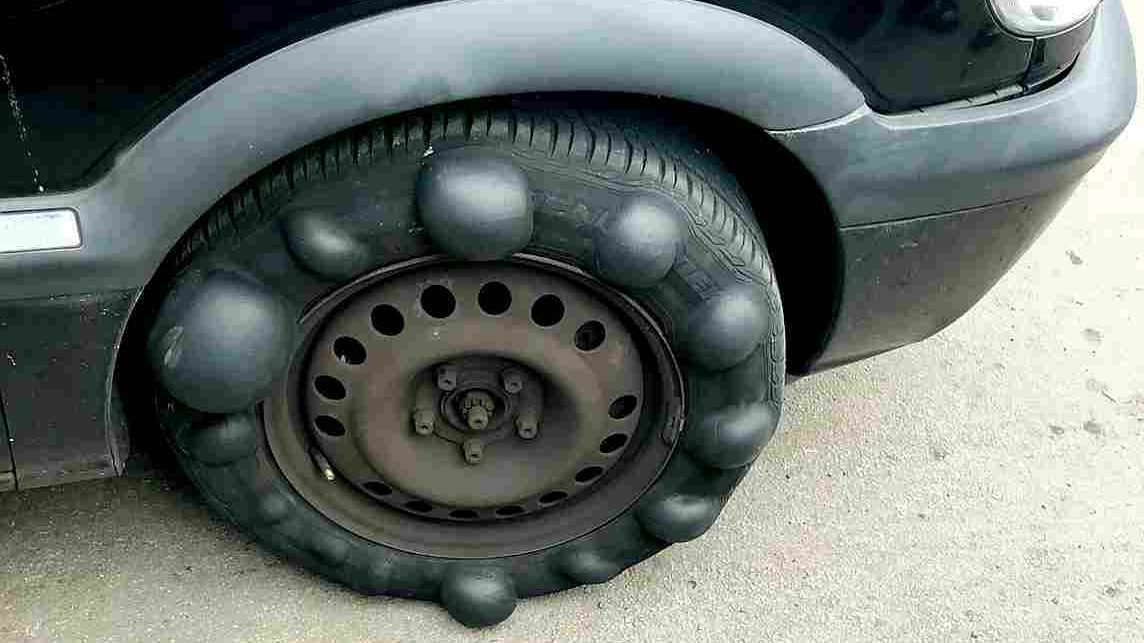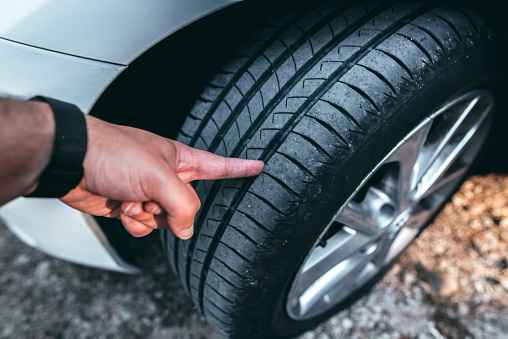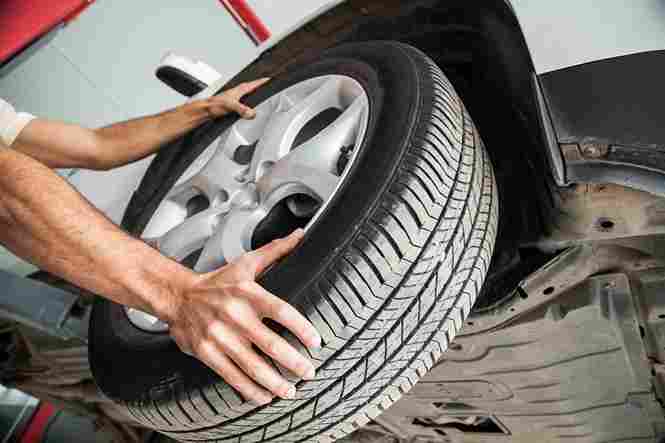It might seem like a small thing, but your car tyres play an important role in how your vehicle behaves while running on the road.
It’s important to keep them in good condition so that you can get the best out of your car. They also directly affect your car’s fuel consumption.
Change them when they start to show signs of wear. Here are some golden tips on when you should change your tyres.
Signs When You Should Change Your Car Tyres

When the rubber is wearing thin and has started to show signs of damage. Here are four signs when you observed, that is time to change your car tyres:
- Your car starts to pull to one side when you drive over a large bump in the road. This is because the tyre is not providing enough support for the wheel.
- You see bubbles or ‘shine’ on the road surface when driving over potholes or in wet weather conditions. This is because water seeps into the tyre and causes it to expand, which makes the tyre less able to grip the road surface.
- You notice that your car takes longer to go from 0-100 mph than it used to. This is because the tyre doesn’t have enough grip and can slip when you apply the brakes.
- The tread on your tyres has started to peel away, revealing the underlying rubber, this is an alarming condition sign and that’s the time to change them.
What damages tyres?
The main damage that tyres can suffer from is overheating, which can lead to rubber degradation and even tyre failure.
Overheating can be caused by a number of factors, including driving in hot weather conditions, driving under low air pressure, and excessive speed.
If you’re experiencing any of these problems, it’s important to change your car tyres as soon as possible.
Tyre Grip Is Much Important

When you change your car tyres, make sure you use the best quality tyre with the best grip. Tyre grip work to keep the tyre from slipping on the road. This can help prevent accidents and save you time and money.
Frequent Punctures To Tyres
If your tyres are losing tread quickly, or if you’re experiencing frequent punctures, you should take action as soon as possible. Here’s when you should and shouldn’t change your tyres:
When the tread is less than 1/3 of its original depth.
When the overall wear indicator on the sidewall is more than 4%.
When your vehicle has been in a severe accident or has major repairs done to it.
When should you inspect your car tyres?
Checking your tyres regularly is one of the most important steps, with these actions you can take to keep your car safe and reliable. Here are four times when you should inspect your car tyre.
- When you first get your car.
- Every 6 months or 12,000 kilometres (whichever comes first).
- When you notice a warning light on your dashboard.
- When your tyres feel “squishy” or give off a “popping noise”.
When should you change your car tyres?
There is no definitive answer to this question, as it depends on a variety of factors including the make and model of your car, the type of tyre being used, and the conditions in which you drive.
However, most experts agree that you should change your car tyres every 7,500 miles or every three months, whichever comes first.
How to Change Your Car Tyres

It’s important to change your car tyres regularly, as they wear down over time. Here are four tips to help you figure out when to rotate your tyres:
- Check the inflation pressure each month. This is usually printed on the side of your tyre. If the pressure has decreased by 2 psi or more, it’s time to rotate your tyres.
- Check your tread depth. Every time you drive on a new set of tyres, inspect them for signs of wear. If the tread depth is less than 3/32 inches, it’s time to replace your tyres.
- Listen for unusual sounds from your car wheels when you accelerate and brake. If you hear a “ping” or “thump” when you hit the gas or brake, that means one or more of your tyres is flat. Change them immediately.
- Observe how your car handles when driving in wet weather conditions. If it feels like the car is going to hydroplane, it may be time to replace all four of your car tyres.
How long does a tyre last?
The tread on your tyres is supposed to wear evenly and completely away, turning into small pieces of rubber that can be swept up when you drive.
However, the tread will only actually wear down to the legal minimum tyre tread depth of 1/2 inch if you drive at a constant speed.
So if you’re driving around town at a relatively low speed, your tyres will last for considerably less time than if you were driving on the open road at a high speed.
To calculate how long your tyres will last under different conditions, simply divide your average daily driving distance by your tyre’s recommended maximum mileage for that type of vehicle.
So if you drive 10,000 miles a year and your car is designed for tyres with a tread depth of 1/2 inch, then your tyres will last for 330 days.
The important thing to remember is that while your tyres should last for the recommended maximum mileage, they won’t last forever. If you’re regularly driving at high speeds or taking long trips, it’s best to replace them sooner rather than later.
How can you repair car tyre?
This is a common question and there is no single answer. It depends on a number of factors, including the age of the tyre, the type of road surface you are travelling on, and how much use the tyre has had.
Generally speaking, car tyres should be replaced every 3-5 years on average, although this can vary depending on the type of tyre and its environment.
If your car tyre is in very poor condition then you can’t repair them. It depends on also your routine, your area, and your speed.
If you are going to intercity then you can use repair tyres but on a long route don’t take risks. The repaired tyre can not match the new so avoid repair, it is better to buy new.
Conclusion
There is no definite answer as to when you should change your car tyres. It depends on a variety of factors. Your driving style, your area roads, weather conditions, your vehicle model and many more factors.
However, generally speaking, you should replace your tyres every 3 to 5 years, depending on the type of tyre and how much use it has been put through.
Faq
How often should you change your car tyres?
The lifespan of tyres depends on various factors such as driving habits, road conditions, and the type of tyre. On average, standard tyres last anywhere from 20,000 to 50,000 miles. However, it’s essential to regularly inspect your tyres and not rely solely on mileage.*
What are the signs that indicate you need to change my tyres?
Tread depth below 1/16th of an inch (1.6mm).
Visible tread wear indicators (flat rubber bars that run perpendicular to the direction of the tread).
Cracks, cuts, or bulges in the sidewalls.
Excessive vibration when driving.
Tyres that are over 6 years old, even if they look okay (as rubber deteriorates over time).
Can you just replace one tyre at a time?
It’s generally recommended to replace tyres in pairs (both fronts or both rears) to ensure balanced handling and traction. If you replace just one tyre, the new tyre may have a different level of wear, traction, or handling characteristics, which can affect vehicle stability.
Does tyre rotation extend the lifespan of your tyres?
Rotating your tyres every 5,000 to 8,000 miles can help ensure even tyre wear, allowing all tyres to wear at the same rate and extending their overall lifespan.
Does tyre maintenance play a role in how often you should change them?
Absolutely! Regularly checking and maintaining the proper tyre pressure, along with routine wheel alignments and tyre rotations, can significantly extend the life of your tyres and improve their performance.
What are the risks of driving on worn-out tyres?
Driving on worn-out tyres can lead to:
Reduced traction, especially in wet conditions, increases the risk of hydroplaning.
Greater vulnerability to punctures and blowouts.
Longer stopping distances.
Reduced fuel efficiency.
Uneven and unpredictable handling, especially during sudden manoeuvres.
